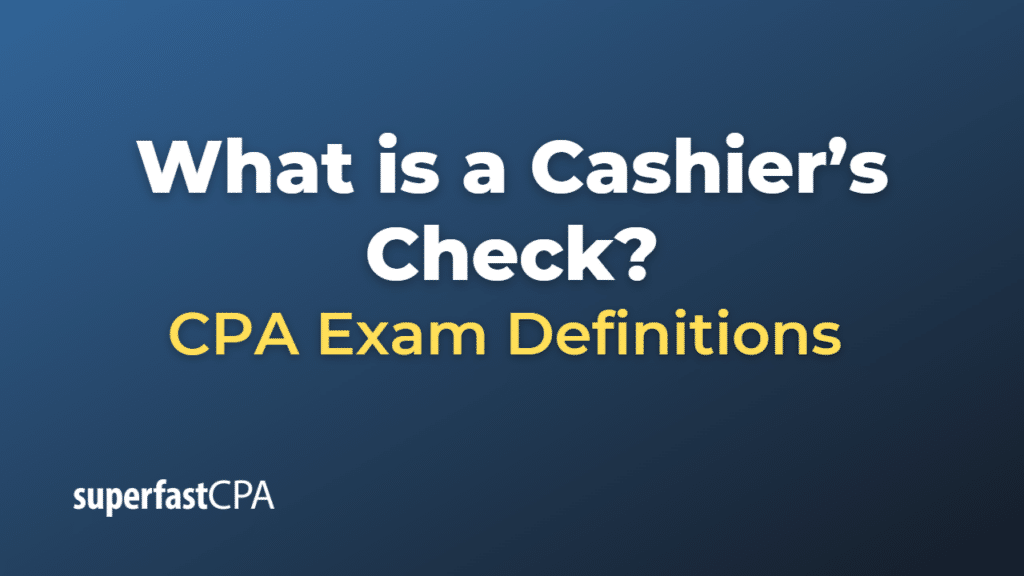Cashier’s Check
A cashier’s check (also known as a bank check, teller’s check, or official check) is a type of check issued by a bank or credit union on its own funds, rather than from the funds of an individual account holder. The bank guarantees the funds for a cashier’s check, making it a secure and trusted form of payment.
To obtain a cashier’s check, a customer must provide the bank with the necessary funds for the check, either by withdrawing the amount from their account or by depositing cash. The bank then issues the check, payable to the designated payee, and signs it. Because the bank itself backs the check, the payee can be confident that the funds are available, reducing the risk of bounced checks or insufficient funds.
Cashier’s checks are commonly used for large transactions, such as real estate purchases, vehicle sales, or other instances where the payee requires a secure and reliable form of payment. Since cashier’s checks are considered safer than personal checks, they are often preferred by sellers or creditors who want to minimize the risk of non-payment.
Example of a Cashier’s Check
Let’s say John wants to buy a used car from Jane for $15,000. Jane wants a secure form of payment and requests a cashier’s check instead of a personal check or cash. To obtain a cashier’s check, John follows these steps:
- John goes to his bank, where he has an account, and requests a cashier’s check for $15,000.
- The bank verifies that John has sufficient funds in his account to cover the amount of the check.
- The bank then withdraws $15,000 from John’s account and creates a cashier’s check payable to Jane for that amount.
- The bank signs the cashier’s check, guaranteeing the funds are backed by the bank.
- John gives the cashier’s check to Jane as payment for the car.
In this example, Jane can feel confident that the $15,000 payment is secure since the bank guarantees the funds. John has ensured a secure and trusted payment method, which helps to facilitate a smooth transaction for both parties involved.













